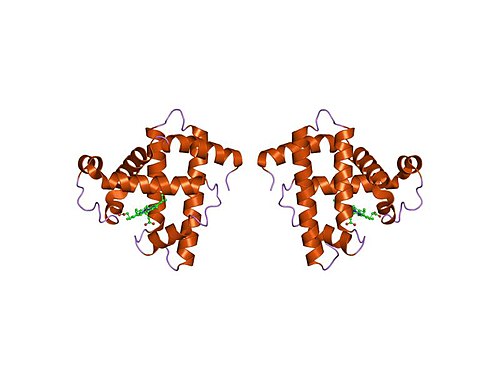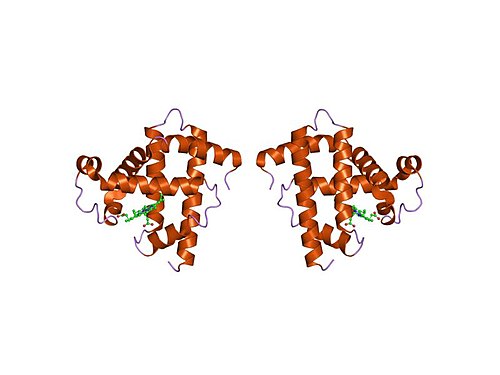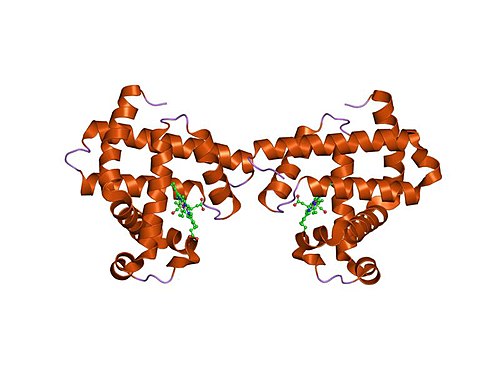Hemoglobinnoun
The iron-containing substance in red blood cells that transports oxygen from the lungs to the rest of the body; it consists of a protein (globulin), and haem (a porphyrin ring with an atom of iron at its centre).
Hemoglobinnoun
The normal coloring matter of the red blood corpuscles of vertebrate animals. It is composed of hematin and globulin, and is also called hæmatoglobulin. In arterial blood, it is always combined with oxygen, and is then called oxyhemoglobin. It crystallizes under different forms from different animals, and when crystallized, is called hæmatocrystallin. See Blood crystal, under Blood.
Hemoglobinnoun
a hemoprotein composed of globin and heme that gives red blood cells their characteristic color; function primarily to transport oxygen from the lungs to the body tissues;
Hemoglobin
Hemoglobin, or haemoglobin (spelling differences) (from Greek αἷμα, haîma 'blood' + Latin globus 'ball, sphere' + -in) (), abbreviated Hb or Hgb, is the iron-containing oxygen-transport metalloprotein in the red blood cells (erythrocytes) of almost all vertebrates (the exception being the fish family Channichthyidae) as well as the tissues of some invertebrates. Hemoglobin in blood carries oxygen from the lungs or gills to the rest of the body (i.e.
Myoglobinnoun
(protein) A small globular protein, containing a heme group, that carries oxygen to muscles.
Myoglobinnoun
a hemoprotein that receives oxygen from hemoglobin and stores it in the tissues until needed
Myoglobin
Myoglobin (symbol Mb or MB) is an iron- and oxygen-binding protein found in the skeletal muscle tissue of vertebrates in general and in almost all mammals. Myoglobin is distantly related to hemoglobin.


























